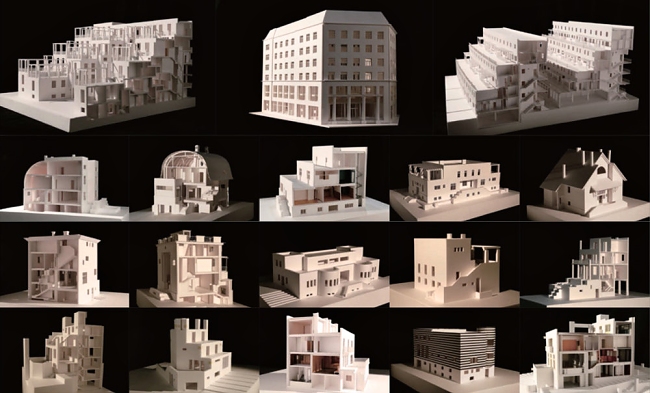
The Prague villa by Adolf Loos showcases models of his buildings
 |
Prague – Starting today, visitors can view models of 13 buildings designed by architect Adolf Loos at one of them, the Winternitz Villa in Prague. The models of the houses, scaled at 1:50, were prepared by students from the University of Tokyo and will be exhibited in Prague until June 16. The Winternitz Villa in Smíchov is a less-known Loos building in the capital, next to the Müller Villa in Střešovice.
Thanks to a removable side wall, it is possible to peek into the elaborately crafted models of the 13 buildings and see Loos's raumplan, the method of spatial organization including the interior furnishings. In addition to the models of the two mentioned Prague villas, visitors will see the Parisian house of Tristan Tzara, the Vienna villas Steiner, Rufer, and Moller, the famous department store Goldman & Salatsch, and an unrealized project - a house for Josephine Baker.
Japanese educator Yoshio Sakurai has visited all of Loos's buildings and has dedicated years to studying this famous architect. "In the 1990s, I began to focus more on Loos, particularly drawn by his specific approach to space and aesthetics. I started considering building models of his projects after visiting the Müller Villa, where the magical space made a deep impression on me. I wanted to understand how Loos thought when designing his houses, and constructing a three-dimensional model proved to be key," he stated.
Loos himself often sought inspiration from Japanese culture in his work. Its influence is evident, for example, in the summer dining room of the Müller Villa, which is inspired by Japanese woodblock prints, or in the apartment of Lea Brummela in Pilsen, where there is a rectangular grid pattern evoking Japanese architecture.
The Smíchov villa, where the model exhibition started today, is named after lawyer Josef Winternitz, who had it built for his family in 1932. He chose Adolf Loos and Karel Lhota as architects. The family inhabited the villa only until 1941, when they were forced to transfer the villa to the Emigration Fund under pressure from racial persecution. The object was subsequently purchased by the municipal authorities of Prague, which established a kindergarten in the villa. It continuously operated there until 1997.
The whole family was transported to Terezín in 1943 and later to the Auschwitz concentration camp. Only the wife of the original owner, Jenny Winternitz, and their daughter Suzana returned, but they never saw the villa again. The descendants who currently manage it learned about the villa only in 1991 during the preparations for restitution.
The English translation is powered by AI tool. Switch to Czech to view the original text source.
0 comments
add comment












